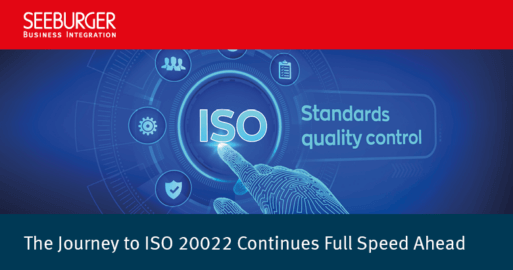Six Emerging Payments Trends, Six Months into 2019

As we are now halfway through 2019, it’s important to look back at the year so far and determine what payments trends should be top of mind for the banking and financial industry. Here are a few that we have gathered based off recent events such as EBA Day 2019 and Payments Canada Summit 2019, as well as meetings, and interviews.
Six Payments Trends 2019
Modernization – Legacy modernization is a constant attempt for banks to improve their infrastructure to be able to roll our products and business services faster, that also is useful for consumers and businesses. Enablement of digital business services to provide the quickest access to secure data and information, internally and externally for customers, business partners and service providers is a must, to stay competitive. Banks are challenged to constantly adapt to support old and new applications and services, and to keep up with the latest regulative and other industry trends within their business ecosystem. Some business drivers are: new consumer products and services, compliance initiatives and Open Banking.
Standards – Quite often payments data being sent, and received, is not following the same format. Financial services and Payments standards are evolving, and are consolidated, however depending on where you are in the world you need to support variances, different industries are using their “standards”, and there are more than 50 versions of Payments formats. Use of APIs are obviously increasing, however there are still no real industry standard available. Will the use of ISO 20022 solve everything? When APIs are implemented as part of an ecosystem, ISO 20022 can add value by providing the common business process data semantics to be used in those API based exchanges. Thus there is a huge opportunity to define a consistent approach to be able to build APIs based on the ISO 20022. All these emerging ISO2022 trends are emerging in 2019. How much is the investment and is there an ROI?
Leveraging Real-time Payment Capabilities – Real-time payments continues to be a major focus for open banking and core banking renewal. Everything we are seeing is being driven by a need to be real time. In the payments space, we talk a lot about the new real-time payment schemes coming online globally, but this trend is way more than just the payment moving from point A to point B in real time—it’s the data that comes along with the payment, or even when the payment is not moving in real time and having an ability to know in real time where the payment is or what is next on the payment value chain.
Enabling Open Banking – From increasing the number of products and services offered to customers, to the means in which they are delivered and consumed, a lack of ability to use Application Programming Interfaces (APIs) and other connection technologies is a key area where banking platforms are failing to address current payment needs. Open Banking requires easy access to the banking ecosystem to share data through webservices and APIs to partners and customers. From self-service onboarding, to global payment services, monitoring and testing – open banking must empower you to utilize your business intelligence to provide access to customers, products and sources of revenue.
Compliance and Regulation – Compliance and regulatory concerns will always be trends of the moment. The ones to name so far in 2019, some of which carry over from previous years include: GDPR, CCPA, PCI DSS, PSD2, anti-money laundering (AML), and MiFID II. When it comes to compliance and regulation, it is imperative to ensure that your applications and systems that were built before a time enamored with lawsuits and corporate oversight, are updated from their legacy state and designed to live up to today’s stringent compliance.
Security: The secure transmission and management of sensitive data between systems and/or people is always top of mind. With various recent security breaches, such as Equifax and most recently Capital One, banks and financial service providers need to ensure their systems are safe, secure and monitored.
Find out how SEEBURGER partners with your financial services organization to keep up with the ever-changing payments landscape and enable an agile payment ecosystem through our Payments Integration Hub solution.
Read our paper: Innovate your Payments Infrastructure for the Digital Economy
References:
General Data and Protection Regulation, GDPR Info, https://gdpr-info.eu/
What is MIFIID2?, Thomson Reuters, https://mifidii.thomsonreuters.com/en/what-is-mifid-ii.html
AMLD4/AMLD 4.1 Facts, the Treasury’s Financial Crimes Enforcement Network (FinCEN), https://www.fincen.gov/
Thank you for your message
We appreciate your interest in SEEBURGER
Get in contact with us:
Please enter details about your project in the message section so we can direct your inquiry to the right consultant.
Written by: Ulf Persson
As SVP Strategic Product Management and Analyst Relations, Ulf is responsible for strategic product management, product marketing, global analyst relations and leadership with regards to SEEBURGER integration technology, platform and integration services. This also includes strategic sales and marketing initiatives. Ulf works across multiple industry verticals such as Financial Services/Payments, Automotive, Logistics, Utilities, Retail, CPG and Manufacturing. Ulf has more than 30 years of global business and technology experience working with product and solution delivery of integration technologies (EAI, EDI, B2B, MFT, API, etc.), Analytics and Big Data, Cloud Services, Digital Transformation and various industry initiatives. Before joining SEEBURGER in October 2016, Ulf worked in various global leadership roles with international business integration technology and cloud services providers.





